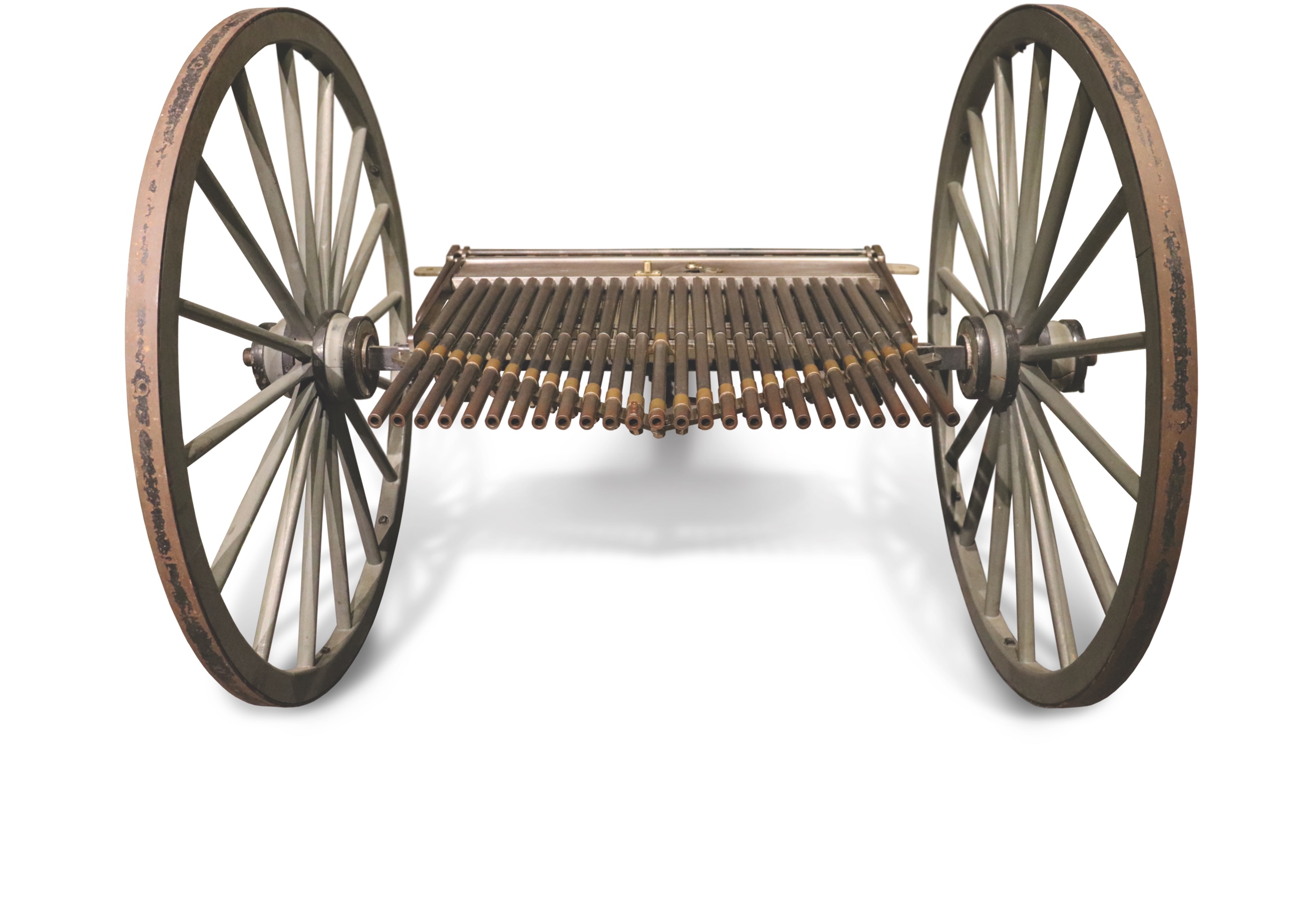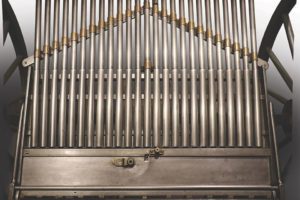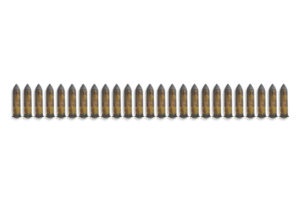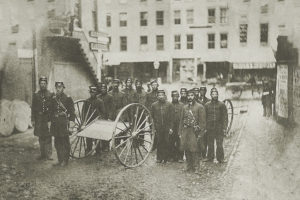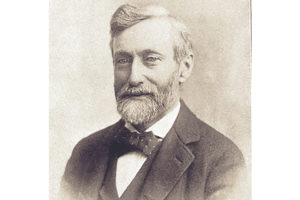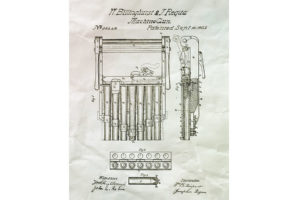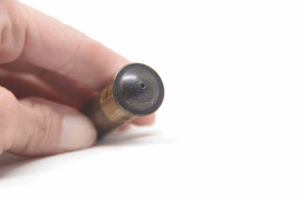The Billinghurst Requa Battery, a breechloading gun, consisted of 25 horizontally arrayed barrels and required a crew of three to work it.
As a young man, Josephus Requa apprenticed to Rochester, N.Y., gunmaker William Billinghurst. Finding he didn’t care for that profession, Requa shifted careers, and by the outbreak of the Civil War he was a successful dentist. The conflict, however, inspired him to think of new ways to inflict pain on humanity. He designed a multi-barrel breechloading gun, and had his old master, Billinghurst, make a prototype.
The centerpiece of the weapon consisted of 25 horizontally arrayed barrels that were loaded at the breech. A crew of three worked the gun, opening up a “piano hinge” breech block to admit a strip of .52-caliber brass cartridges, each with a hole in the base. Once the strip was in place, a gunner pulled a lanyard to detonate a single centrally placed percussion cap and discharge the deadly pipe organ. After the initial cartridge discharged, it triggered a chain reaction as the flash jumped to the other rounds until all had been fired.
The “Requa Battery” offered undeniable firepower. At an 1861 demonstration, it fired seven volleys, or 175 shots, in one minute. Despite such promise, the inventors ran into a common problem—hidebound Regular Army officers such as ordnance chief Brig. Gen. William Ripley, who considered the weapon wasteful of ammunition and would not offer a federal contract. Undaunted, Requa took his case directly to President Abraham Lincoln in May 1862. Impressed, the president asked Ripley to take another look, but still no national contract was let.
Requa had aroused enough interest, however, to secure a live test before Lincoln and Ordnance Department officers later that month. Though the tests were successful, a government contract still eluded Requa and Billinghurst. The pair turned to private manufacturers such as Remington Arms to produce components that were then assembled in Billinghurst’s shop and by other factories. About 50 were produced.
Some Requa guns made it into the field. Five of the weapons were used during the Siege of Charleston, S.C., where a Federal officer reported they were “used against the enemy’s sharpshooters and working parties, apparently with good effect.” Two Requa guns were engaged with the Army of the James during the siege of Petersburg and Richmond, and manned by members of the 16th New York Heavy Artillery.
The Requa was not a true machine gun, as it did not use a gas return system to fire continuously, and it was quickly obsolete after the war. But it was a significant step forward in the development of rapid-firing weapons that would soon come to dominate the battlefield.

